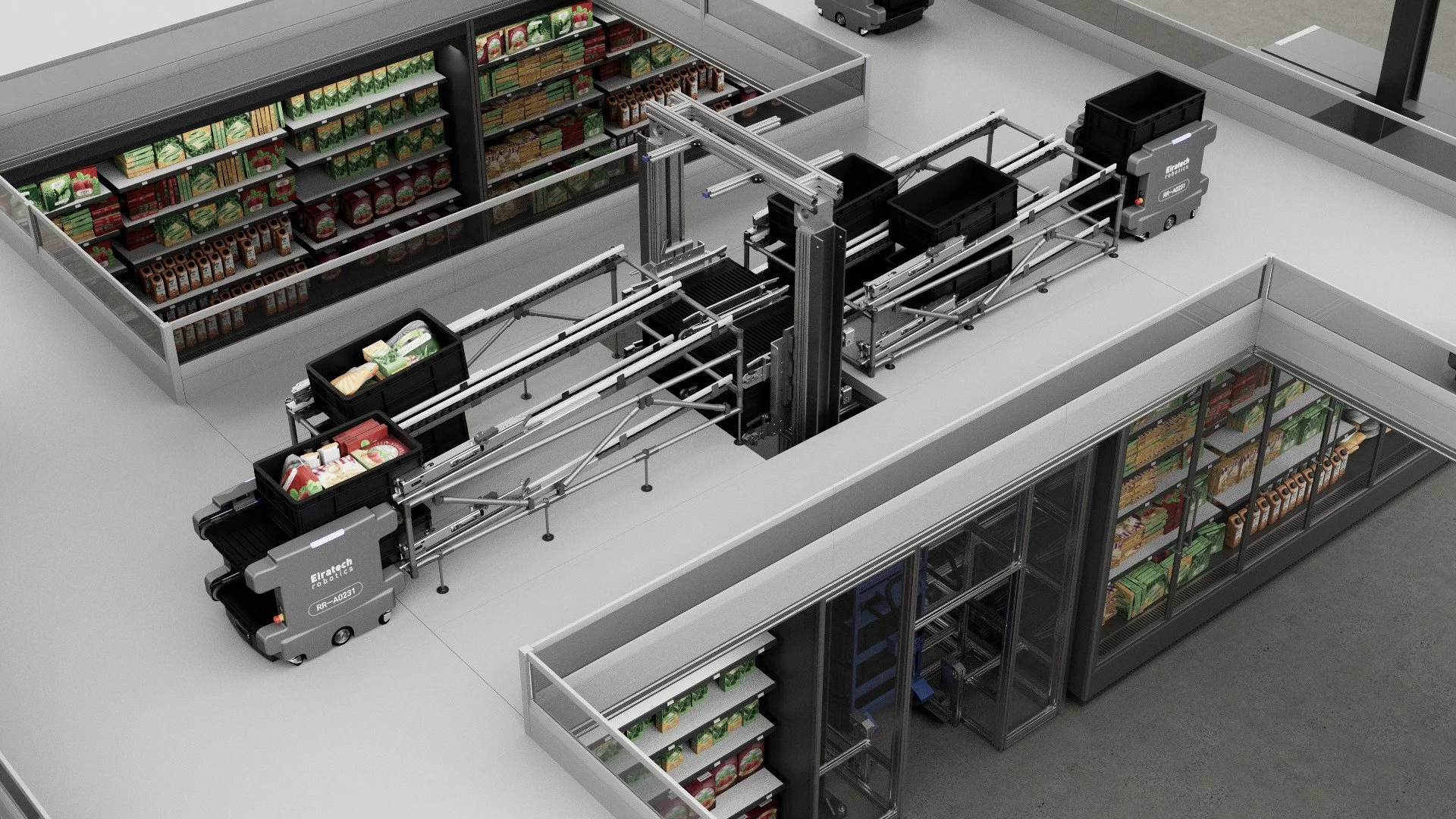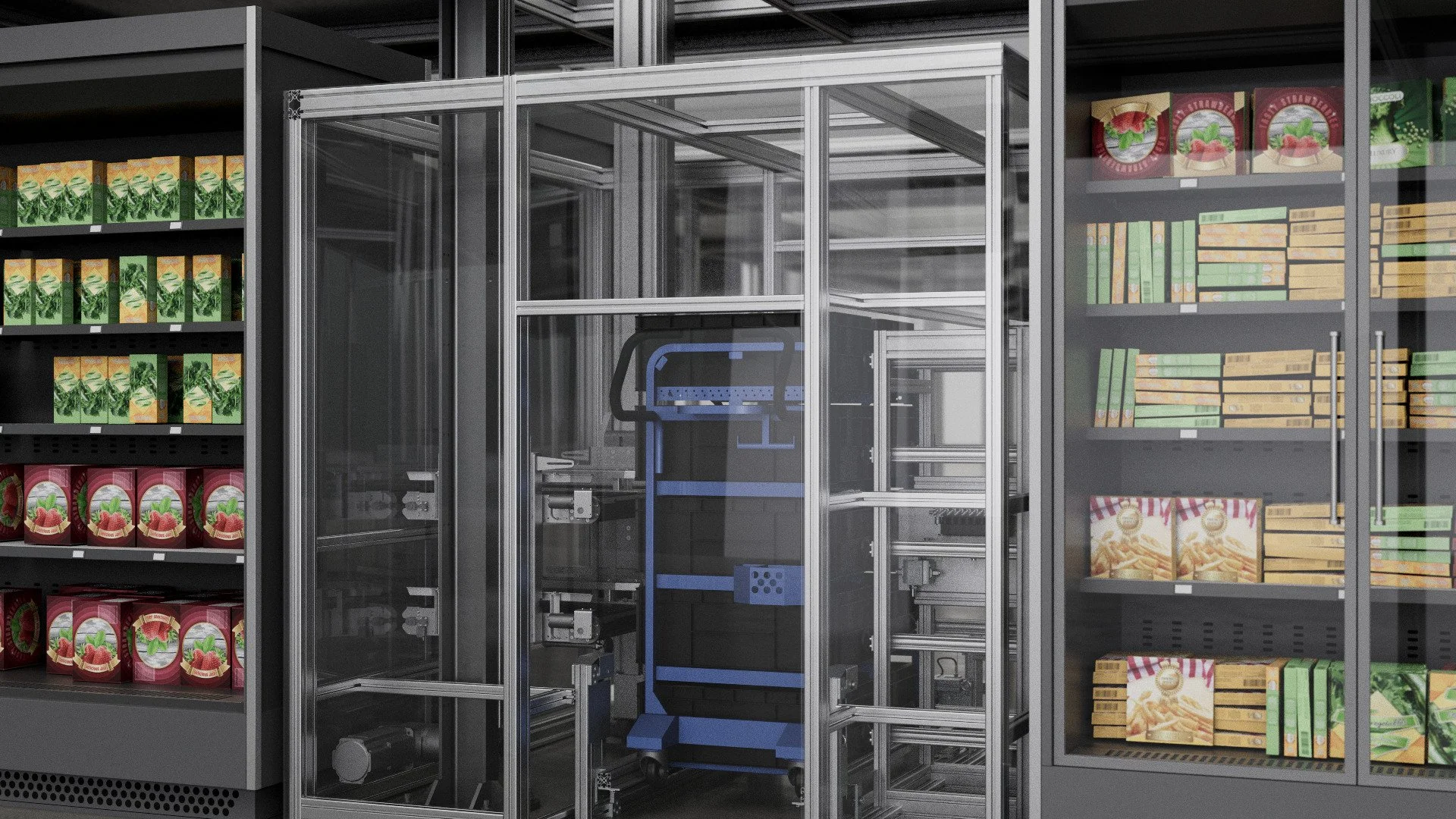Designing Robots for Aisles, Not Just Aisles of Code
Concept design for autonomous robots transporting totes containing online orders across overhead aisles in supermarkets, in full view of shoppers. This has the added advantage of turning safety, design, and tech transparency into design and user experience highlights.
Credit: Eiratech Robotics
Shopper-visible automation succeeds when aesthetics and safety optics are first-class
Warehouse robots are typically B2B, far from the shopper’s eye. But overhead retrieval systems that move totes across supermarket aisles can put robots in full view. Design Thinking as a discipline in marketing and product design highlights why appearance, sound and motion become part of the service promise, not a garnish. If shoppers feel threatened or disturbed, store leaders will throttle operations no matter how elegant the hardware is.
Internal Design Thinking workshop insights can lead to grounded and actionable steps to integrate autonomous robots in the in-store shopping experience. For example, shoppers at some grocery stores may respond well to muted colours that blend into the environment, soft LED cues that signal state-of-the-art technology without shouting, and lower noise so the robot presence feels intentional rather than intrusive. These are not branding whims; they are risk controls for acceptance. Through such workshops, teams can discover gaps between concept art and manufacturable casings, which argues for involving industrial design and user experience (UX) at the start, not the end, of the engineering process.
As part of this Design Thinking workshop, a journey mapping exercise helps by following imaginary representative shoppers (name them and assign personalities based on marketing demographics) through first sighting, repeated passes and checkout. This can help identify the emotional tones that store managers actually fear: fascination tipping into distraction; curiosity fading into annoyance; and rare but potent moments of perceived danger near families with children. These are design inputs. Motion planning can impact robot traffic over aisles during peak hours; sound profiles can shift by time of day; and light cues can adapt to ambient glare. None of this is hard once you treat autonomous robots as public-facing tech marvels and a brand extension, not just warehouse workhorses.
Concept design for a robot “turnaround-station” that’s built into shopping aisles so that supermarket staff (pickers) can insert fully-stacked trolleys containing online orders and have a robot elevator move all the baskets in the picking trolley to the autonomous robots on overhead aisles. This saves pickers significant time and effort by not having to manually move fully-stacked trolleys to the warehouse in the back of the store. With in-house branding and design, many aspects of the robotic e-fulfilment process becomes visible to shoppers at the store, underscoring the importance of blending emerging technology with seamless design and user experience.
Credit: Eiratech Robotics
Operationalising the insight is where programmes live or die. Build A/B trials that test casing options, sound dampening and motion profiles; collect store-level NPS and incident logs; and publish a playbook that site teams can own. Put customer-facing comms in the loop—digital signage with “what our autonomous robots are doing here” calm the unfamiliar. Train staff on simple, confident answers and escalation paths so they identify robots as non-human colleagues, which can create moments of genuine humour for shoppers.
Commercially, design shows up as revenue insurance. Grocers will pay for predictable throughput without brand risk. Vendors that ship a “retail pack” (casing, lighting, acoustics, motion defaults, signage templates, shopper-comms), plus a field-proven safety case and usability evidence, clear corporate risk gates faster. Such an Alpha project is a blueprint: co-create with the retailer, treat shoppers as a third stakeholder, and iterate in the open. Robots that earn their welcome will be allowed to do more; those that don’t will be parked—no matter how clever the engineering and the code.

